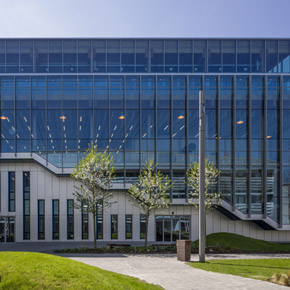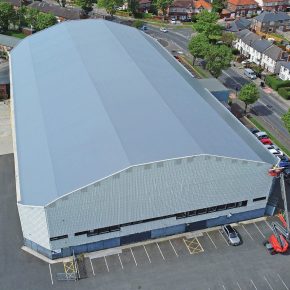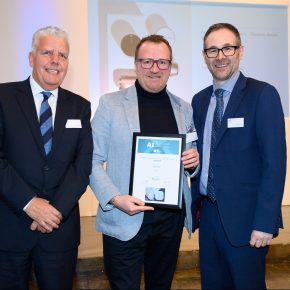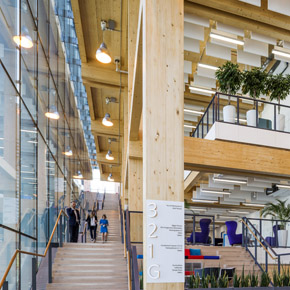
BIM: The benefits of retaining project teams
With the number of professionals involved in the design and construction journey, the structure and composition of project teams changes throughout the duration of each project.
Due to individuals providing specialist knowledge and components during each phase of the build, there is a requirement for enhanced collaboration within the construction industry. X-LAM discusses with PSB Magazine…
Working in such a project-based industry can be challenging due to the interactions taking place between many unfamiliar teams for a relatively short period of time. This can complicate an already demanding environment when it comes to communication, in which technical language and mixed skillsets are so prominent.
However, when executed accurately, it is a great incentive for main contractors to retain project teams across numerous builds. By forming strong relationships and good working practices, seamless collaboration can be achieved across construction teams.
With the use of BIM technology, the industry is able to tackle challenges collaboratively. BIM defines objects as building elements and systems which encompass all the information related to the project and its processes. This allows multi-disciplinary teams to work in unity, bringing their design data into a single, intelligent model.
This process helps to identify design faults, predict and execute the desired building performance, as well as assess and address lifecycle issues during the design stage.
In order to reap the maximum benefits of succinct teamwork during a project, collaborative practices must be incorporated at the very beginning of the initial design process. This can include procurement routes, problem resolution procedures and information management procedures.
The benefits of this approach were clearly demonstrated throughout the design and build of the BSkyB Believe in Better Building project (pictured) which involved high levels of collaboration. This typically comprises a mixture of 3D CAD for concept work and 2D for drafting of statutory approval documentation and Production Information. CAD standards are managed to BS 1192:2007 and electronic sharing of data is carried out from a common data environment (CDE), often managed by the contractor. In this instance, architects and engineers worked together in a shared office throughout the project – allowing them to make real time decisions.
A key demonstration of the use of collaborative working during this project was shown through the detailing of the windows and the interface between them, with the cassettes and glulam frame. As the teams were based in the same office, workshops were able to be quickly assembled in order to ensure the correct details could be developed to meet the requirements for the whole team.
With increasing requirements to design and construct in a more detailed manner and at a rapid pace, there is clearly an imperative to improve industry performance.
Construction professionals must work together to steer the industry towards a more collaborative culture through the use of developments such as BIM technology.
Latest news

22nd April 2024
New EJOT role will develop strategic support for UK flat roofing sector
EJOT UK has taken a major step in the expansion of its support for the flat roofing market by appointing one of its most experienced building envelope fastening specialists as its first sector-dedicated business development manager.
Posted in Articles, Building Industry News, Building Products & Structures, Building Systems, Innovations & New Products, Posts, Recruitment, Restoration & Refurbishment, Retrofit & Renovation, Roofs
22nd April 2024
Access2 Wins ADSA-Sponsored Award at AI Specification Awards
Access2 clinched the ADSA-sponsored Product Design and Innovation Award (Electronic) at the AI Specification Awards 2024 on Thursday.
Posted in Access Control & Door Entry Systems, Architectural Ironmongery, Articles, Awards, Building Associations & Institutes, Building Industry Events, Building Industry News, Building Products & Structures, Building Services, Doors, Facility Management & Building Services, Information Technology, Innovations & New Products, Retrofit & Renovation, Security and Fire Protection, Video of the Week
19th April 2024
ASSA ABLOY: Access solutions can impact sustainability performance across the full life-cycle of a building
Embedding sustainability within any organisation requires a broad, strategic perspective. Scrutiny should include the physical infrastructure itself: According to the IEA, buildings consume around 30% of global energy*. ASSA ABLOY has more…
Posted in Access Control & Door Entry Systems, Architectural Ironmongery, Articles, Building Industry News, Building Products & Structures, Building Regulations & Accreditations, Building Services, Case Studies, Doors, Facility Management & Building Services, Information Technology, Research & Materials Testing, Retrofit & Renovation, Security and Fire Protection, Sustainability & Energy Efficiency, Video of the Week
19th April 2024
British weather doesn't dampen spirit for new HMG Garden Paint
Despite one of the wettest starts to the year on record, customers are starting to plan for brighter days with HydroPro Garden Paint from HMG Paints.
Posted in Articles, Building Industry News, Building Products & Structures, Garden, Innovations & New Products, Paints, Paints, Coatings & Finishes, Restoration & Refurbishment, Retrofit & Renovation, Site Preparation, Sustainability & Energy Efficiency, Waste Management & Recycling
 Sign up:
Sign up: 